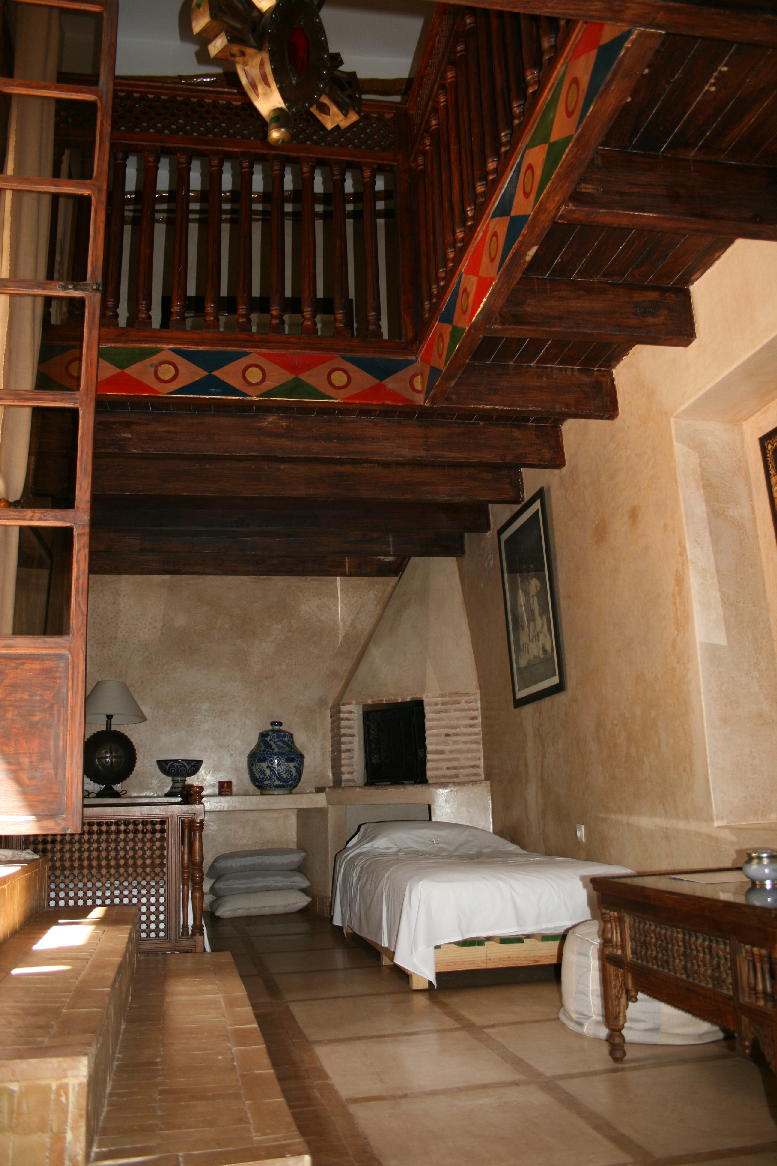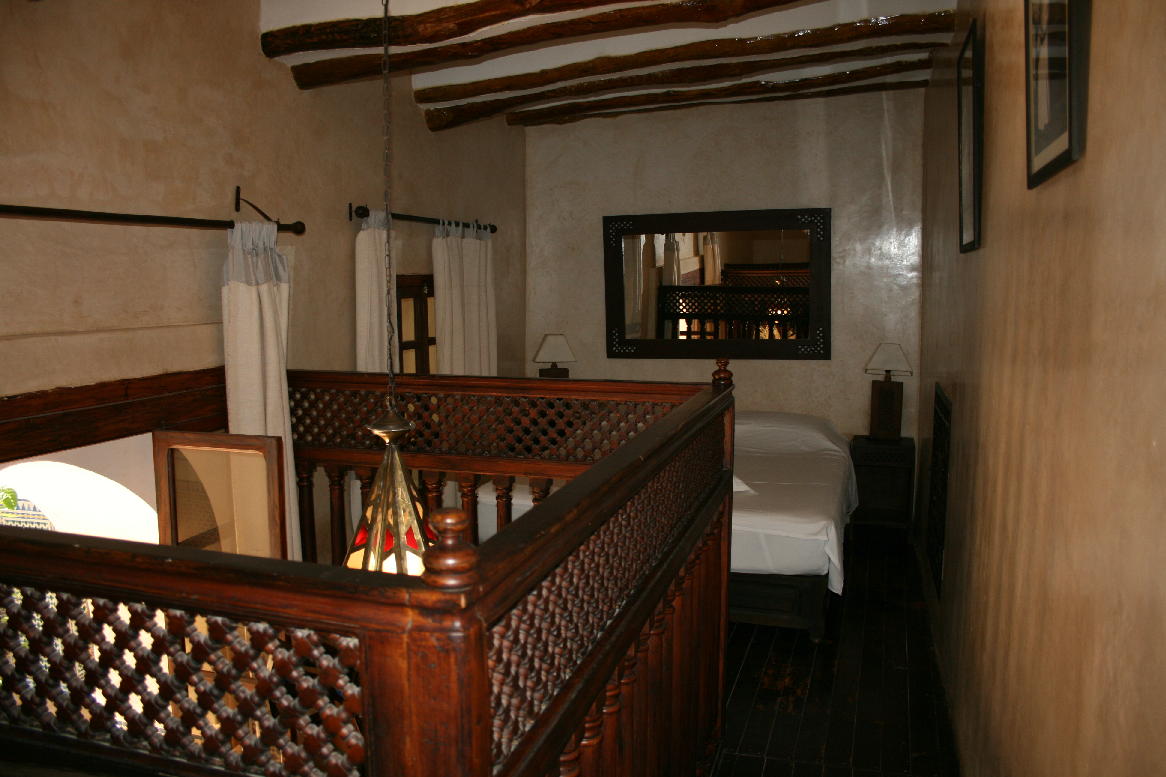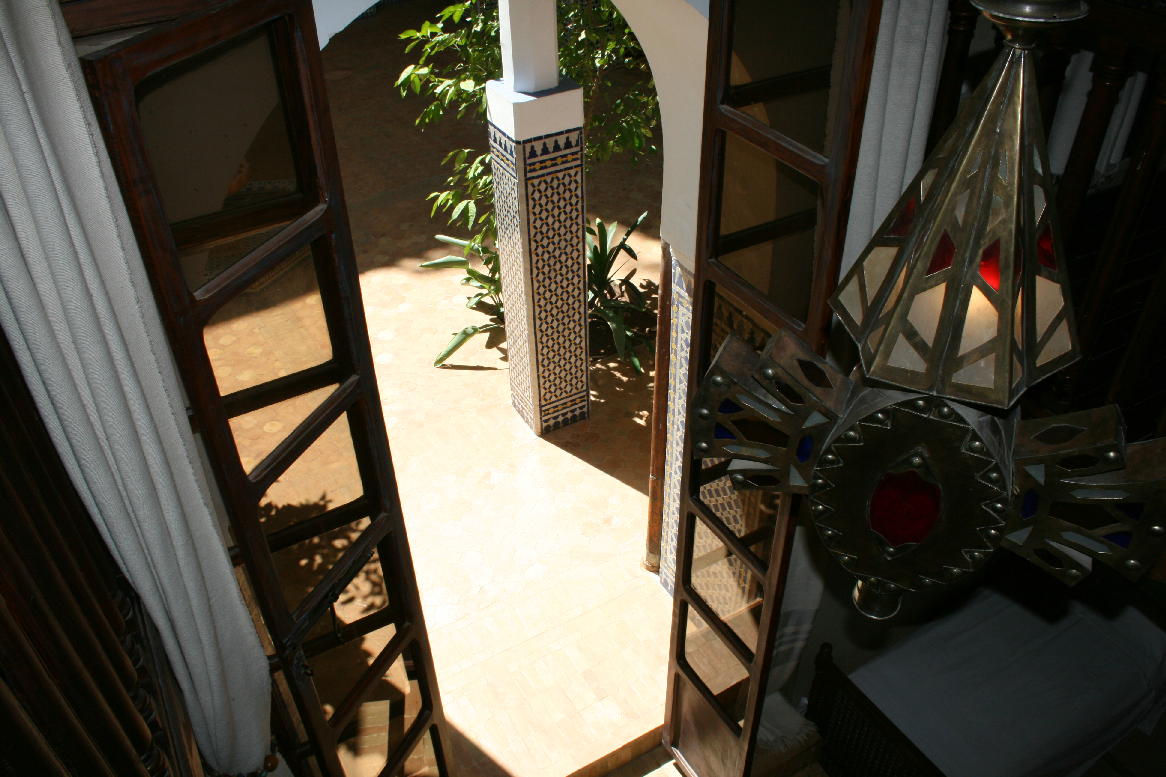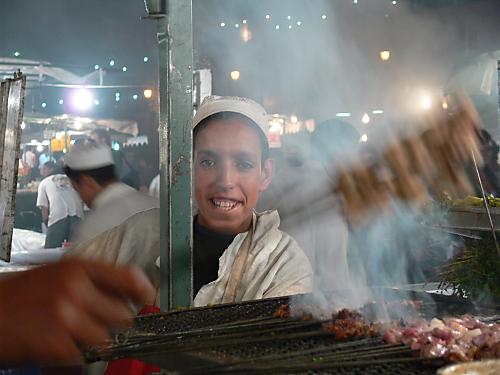Marrakech Hostel
Equity Point offers you a hostel in Marrakech, the Equity Point Marrakech hostel, our first hostel in Africa, a haven of luxury (the magic of a central and peaceful location in Marrakech).
Marrakech Guide
Equity Point Marrakech is the newest of our hostels, and is ideally located in the heart of the Médina of Marrakech, near the souqs, and la Place Jamae el Fenae.


Situated at the foot of the Atlas mountains, the imperial city of Marrakech is large, noisy, polluted, and smelly. But Marrakech is also beautiful, fascinating, full of history, and the cultural centre of Morocco. If you enjoy a daily assault on all your senses, then you'll have a lot of fun. When the most popular sights include numerous references to "tranquility" and "peace", like the Majorelle Gardens, or the gardens around the Saadian Tombs, you know you're in for an interesting experience. If you find it all a little overwhelming, then get an official guide to take you around.


There are so many things to see, you should spend at least 3 days in Marrakech. If you can afford it, treat yourself to a stay in a Riad, so when you return from a hectic day amidst carpet salesman, fire jugglers, and noisy souqs, you can relax with a cup of mint tea in the calm of a tranquil courtyard.
This guide to Marrakech will help you figure out the best time to go, and the best of the sights to see.
When to Go
It is best to try and avoid the summer heat and crowds, and visit Marrakech in the cooler months, between September and May (for average temperatures in Marrakech, click here). That said, there are some annual events that take place in summer, which you may not want to miss:
- Marrakech Popular Arts Festival in July (July 10-15 in 2006). This annual festival attracts folk singers, dancers, fortune-tellers, acting troupes, snake charmers, fire-swallowers and more, from all over Morocco. Since 2000, the festival has also attracted many artists and entertainers from Europe and Asia. The main events take place in the ruins of the 16 century Badi Palace and the Djemma el Fna (main town square - see below).
- Fantasia is a horse-riding spectacle that includes hundreds of charging horsemen (and women) wearing traditional clothing. It's part of the Popular Arts Festival, so it takes place at the same time in July (July 3-10 in 2005). You can experience the Fantasia in the evenings outside the city walls, near the Bab Jdid. If you don't get to see it in July, there's a restaurant that offers the Fantasia as entertainment while you dine, the Chez Ali. Up-market and touristy it may be, but I'm sure you won't forget the experience in a hurry.
- Imilchil Marriage Feast is a Berber marriage festival where up to forty couples tie the knot. It takes place in Imilchil in the Middle-High Atlas Mountains near Marrakech. The festival is a great way to experience Berber culture, music, and dance. The event takes place after harvest every year, so the dates vary. In 2005, it will be held from 26-28 August.
Winter in Marrakech
From mid-January to mid-February, there is usually enough snowfall in the Atlas mountains to accommodate skiers. The Oukaimden ski resort is less than 50 miles away from Marrakech. There are several ski lifts, and if they don't work, you can always take a donkey up the slopes. If there's not enough snow, the views are always spectacular, and it's still worth the trip.
What to See in Marrakech
Djemma el Fna
The Djemma el Fna is the real heart of Marrakech. This is a large central square in the old city (Médina), and during the day it's the perfect place to grab a freshly-squeezed orange juice and a handful of dates. At the end of the afternoon, the Djemma el Fna transforms into an entertainer’s paradise - if you're in to snake charming, juggling, music, and that sort of thing. Snack stalls are replaced with stalls offering more substantial fare, and the square comes alive with entertainment that hasn't changed much since medieval times.
The Djemma el Fna is surrounded by cafes overlooking the square, so you can just relax and watch the world go by, if you're tired of jostling in the crowds below. Be prepared to be asked for money if you take photos of the performers or stop to watch the entertainment.
Souqs
The souqs are undercover markets that sell everything from chickens to high-quality crafts. The souqs of Marrakech are considered to be among the best in Morocco, so if you like shopping and bargaining, you'll enjoy yourself tremendously. Even if you don't like shopping, the souqs are a cultural experience you wouldn't want to miss. Souqs are divided in to small areas that specialize in certain goods or a trade. The metal workers all have their little shops clustered together, as do the tailors, butchers, jewellers, wool dyers, spice merchants, carpet salesmen, and so on.
The souqs are situated north of the Djemma el Fna, and finding your way around the narrow alleyways can be a bit tricky. Guides are plentiful in Marrakech, so you can always use their services, but getting lost in the chaos is also part of the fun. It's often more interesting to peek in to souqs where local wares are being produced, than to be taken to yet another carpet shop by your guide. If you get lost, just ask for directions back to the Djemma el Fna.
Majorelle Gardens and the Musuem of Islamic Art
In the 1920's, French artists Jacques and Louis Majorelle created a stunning garden in the middle of Marrakech's new town. The Majorelle Gardens are filled with colour, plants of all shapes and sizes, flowers, fish ponds, and perhaps most pleasingly, tranquility. The designer Yves Saint Laurent now owns the gardens, and has also built himself a house on the property. The building that gets most of the attention, however, is the bright blue and yellow building that the Marjorelles used as their studio, and which now houses the Museum of Islamic Art. This small museum includes some good examples of Moroccan tribal art, carpets, jewellery, and pottery.
The gardens and museum are open daily, with a 2 hour lunch break from 12-2pm.
Saadian Tombs
The Saadian dynasty ruled much of southern Morocco during the 16th and 17th centuries. Sultan Ahmed al-Mansour created these tombs for himself and his family in the late 16th century; 66 of them are buried here. The tombs were sealed up rather than destroyed in the 17th century, and were only re-discovered in 1917. Consequently they are beautifully preserved, and the intricate mosaic is stunning. Despite being situated in the heart of the somewhat hectic old town (Médina), the tombs are surrounded by a beautiful and peaceful garden.
The tombs are open daily, except for Tuesdays. It's advisable to get there early to avoid the tour groups.
The Ramparts of Marrakech
The walls of the Médina have been standing since the 13th century, and make for a wonderful early morning stroll. Each gate is a work of art in itself, and the walls run for twelve miles. The Bab ed-Debbagh gate is the entry point for the tanneries, and provides an excellent photo opportunity, full of vivid colors from the dyes used. It is, though, a little smelly!
Palais Dar Si Said (Museum of Moroccan Arts)
A palace and museum in one, and well worth a visit. The palace is opulent and beautiful in itself, with a lovely courtyard where you can relax and take some pictures. The museum's displays are well laid out, and include jewellery, costumes, ceramics, daggers, and other artefacts. The museum is open daily, with a couple of hours break for lunch.
Ali ben Youssef Medersa and Mosque
The Medersa was built in the 16th century by the Saadians, and could house up to 900 religious students. The architecture is beautifully preserved, and you can explore the tiny rooms where the students used to live. The mosque is adjacent to the Medersa.
El Bahia Palace
This palace is a wonderful example of the best of Moroccan architecture. There's lots of detail, arches, light, engravings, and what's more, it was built as a harem's residence, which makes it even more interesting. The palace is open daily with a break for lunch, although it is closed when the royal family visits.
We also have hostels in Barcelona, Girona, Madrid and London:
